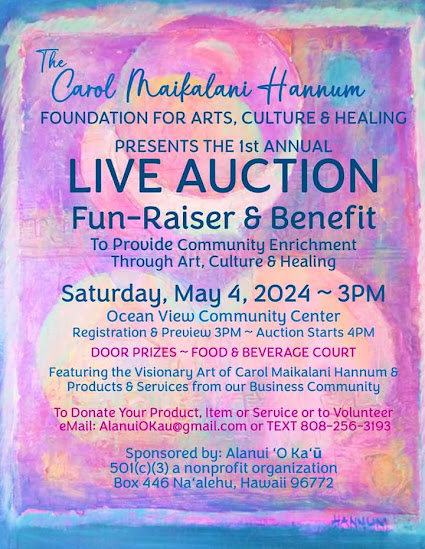 |
| The 2011 tsunami lifted this house off its foundation at Kapua Bay. Photo by Kai Kahele |
County Civil Defense Director Talmadge Magno said, “This video has it all in one place. It covers how a tsunami is generated, tsunami zones, emergency communications and evacuation planning so that residents properly know where to go during the tsunami threat.”
Dennis Hwang, faculty with Hawai‘i Sea Grant, said “This video is the result of a collaborative partnership among emergency managers from across the state, as well as the Pacific Tsunami Warning Center, International Tsunami Information Center, and Pacific Tsunami Museum, as well as the Hawai‘i State Department of Education which produced the video. It includes the most up-to-date information
available and is an important resource for the public now and into the future.”
A statement from Sea Grant says, "The experts who produced the video strongly encourage every resident of Hawai‘i, and every visitor, to watch this free resource video which could potentially save their life or the life of a family member. While the video focuses on tsunami preparedness, it includes information to help prepare for other natural hazards such as wildfires and hurricanes."
This year marks 78 years since the deadly 1946 Aleutian Islands earthquake that generated tsunami waves that wiped out the Punalu‘u shoreline in Ka‘ū and sent a tsunami wave over 50-feet high in Hilo, caused tragic loss of life, and $340 million economic damage to the state.
 |
| This Okoe Bay home was destroyed by the 2011 tsunami from Japan. Photo by Kai Kahele |
A statement from Sea Grant says, "The experts who produced the video strongly encourage every resident of Hawai‘i, and every visitor, to watch this free resource video which could potentially save their life or the life of a family member. While the video focuses on tsunami preparedness, it includes information to help prepare for other natural hazards such as wildfires and hurricanes."
This year marks 78 years since the deadly 1946 Aleutian Islands earthquake that generated tsunami waves that wiped out the Punalu‘u shoreline in Ka‘ū and sent a tsunami wave over 50-feet high in Hilo, caused tragic loss of life, and $340 million economic damage to the state.
On March 11, 2011, a tsunami from Japan flooded Punalu‘u beach and destroyed and damaged several houses north along the coast.
 |
| Measurements taken after the 2011 tsunami from Japan came ashore but largely spared Punalu'u, while destroying several beach homes up the coast at Okoe and Kapua Bays. Photo by Julia Neal |
To read comments, add your own, and like this story, see facebook.com/kaucalendar. See upcoming events, print edition and archive at kaunews.com. See 7,500 copies the mail and on stands.
HAWAI‘I IS ONE OF THE LEAST GAMBLING-ADDICTED STATES. Even though these islands are known for illegal chicken fighting and for residents frequently visiting Las Vegas, Hawai‘i is one of two states where gambling is illegal. The other is Utah. WalletHub rated all 50 states and placed Hawai‘i 44th. The study noted that nationwide, the gambling industry racked up $65.5 billion in revenue last year. Gambling includes legal and illegal gambling operations, lottery sales per capita, and the share of adults with gambling disorders. The most gambling-addicted states, according to WalletHub, are Nevada, South Dakota, Montana, Louisiana, Pennsylvania, Oklahoma, Mississippi, west Virginia, Oregon, and New Jersey. The least addicted population is in Utah, followed by Alaska, Vermont, Nebraska, Maine, Wisconsin, Hawai‘i, Connecticut, Kansas and Georgia.See the entire report at https://wallethub.com/edu/states-most-addicted-to-gambling/20846.
To read comments, add your own, and like this story, see facebook.com/kaucalendar. See upcoming events, print edition and archive at kaunews.com. See 7,500 copies the mail and on stands.
COASTAL OBSERVATION & SEABIRD SURVEY TEAM will host What's Washed In: Seabirds,
Since the first surveys began in 1999, Coastal Observation and Seabird Survey Team has steadily expanded from a nucleus of five beaches to nearly 450 beaches. From 12 participants who worked to invent and refine the COASST system of carcass identification, COASST has grown to more than 1,000 participants, making us the largest beached bird network in the world.
Dr. Julia K. Parrish will lead the webinar. She is Associate Dean for Academic Affairs in the College of the Environment at the University of Washington and a Lowell A. and Frankie L. Wakefield Professor of Ocean Fishery Sciences. She is a marine biologist, a conservation biologist, and a specialist in animal aggregation. For more than 20 years, Parrish has conducted research on seabirds, focused on the natural and human-caused factors causing population decline. She is also the Executive Director of COASST, the citizen science program involving hundreds of participants collecting monthly data on the identity and abundance of beach-cast birds and marine debris, with the goal of creating the definitive baseline against which the impacts of any near-shore catastrophe could be measured. Sign up at https://register.gotowebinar.com/register/4463749363462859866utm_medium=email&utm_source=GovDelivery
Dr. Julia K. Parrish will lead the webinar. She is Associate Dean for Academic Affairs in the College of the Environment at the University of Washington and a Lowell A. and Frankie L. Wakefield Professor of Ocean Fishery Sciences. She is a marine biologist, a conservation biologist, and a specialist in animal aggregation. For more than 20 years, Parrish has conducted research on seabirds, focused on the natural and human-caused factors causing population decline. She is also the Executive Director of COASST, the citizen science program involving hundreds of participants collecting monthly data on the identity and abundance of beach-cast birds and marine debris, with the goal of creating the definitive baseline against which the impacts of any near-shore catastrophe could be measured. Sign up at https://register.gotowebinar.com/register/4463749363462859866utm_medium=email&utm_source=GovDelivery
To read comments, add your own, and like this story, see facebook.com/kaucalendar. See upcoming events, print edition and archive at kaunews.com. See 7,500 copies the mail and on stands.








.heic)

.heic)